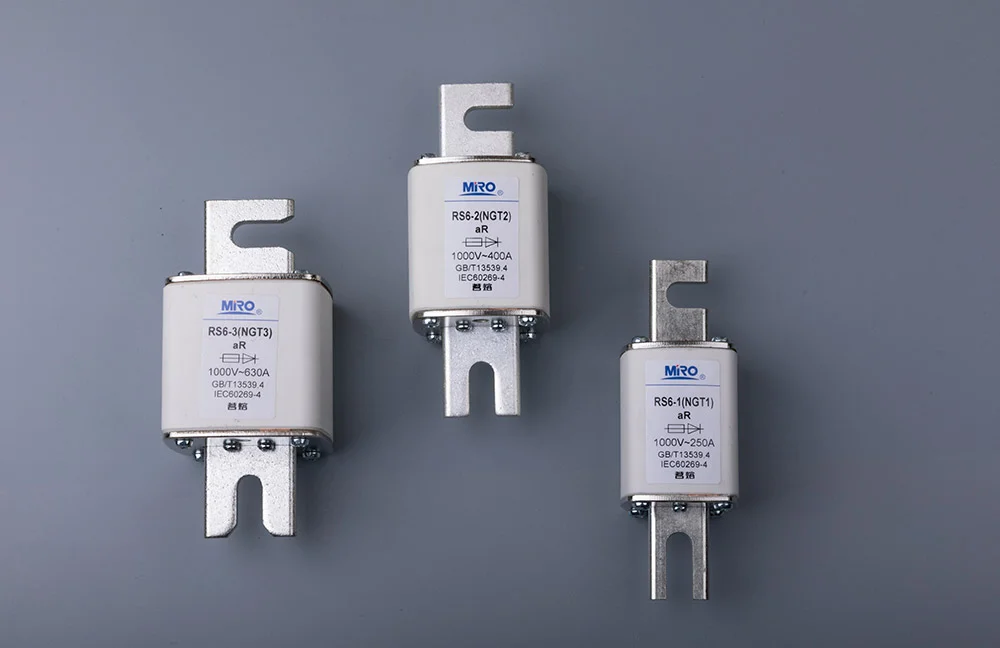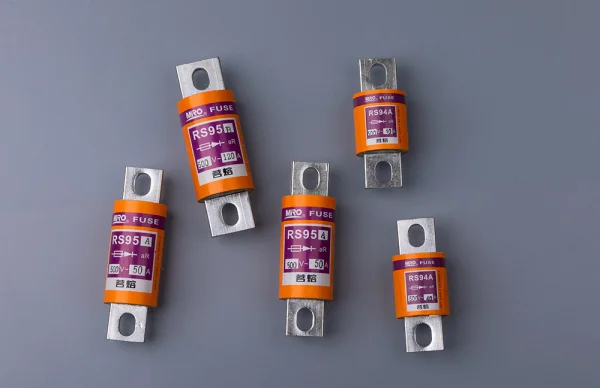- This topic is empty.
-
AuthorPosts
-
Bolt connected fuse links are an essential component in industrial applications, providing reliable protection to electrical circuits. As with any electrical equipment, proper installation and regular maintenance are crucial for ensuring the optimal performance and longevity of bolt connected fuse links. MIRO, a trusted manufacturer of electrical components, specializes in producing high-quality bolt connected fuse links. In this article, we will explore the installation and maintenance considerations for bolt connected fuse links in industrial applications.
1.Proper Installation Procedures
Proper installation of bolt connected fuse links is essential to ensure their effective operation and to maintain the safety of the electrical system. Here are some key considerations for the installation process:
a. Select the Right Fuse Link: Before installation, ensure that the selected bolt connected fuse link is suitable for the specific application in terms of voltage rating, current rating, and fault current capability. This ensures proper protection and performance.
b. Follow Manufacturer's Guidelines: Adhere to the manufacturer's instructions and guidelines for proper installation procedures. These guidelines may include torque specifications for tightening the bolts, specific tools required, and any additional safety measures.
c. Ensure Proper Electrical Connections: Ensure that the electrical connections are clean, tight, and secure. Loose or improper connections can lead to increased resistance, heat buildup, and reduced effectiveness of the bolt connected fuse link.
d. Consider Environmental Factors: Take into account environmental factors such as temperature, humidity, and vibration. Ensure that the installation location is suitable for the specific requirements of the bolt connected fuse link.
e. Provide Adequate Clearances: Provide sufficient clearances around the bolt connected fuse link to allow for proper ventilation and heat dissipation. This helps to prevent overheating and ensures optimal performance.

2.Regular Maintenance Practices
Regular maintenance is essential to ensure the continued reliability and effectiveness of bolt connected fuse links. Here are some important maintenance considerations:
a. Visual Inspections: Conduct regular visual inspections of the bolt connected fuse link to check for any signs of damage, wear, or loose connections. Look for signs of overheating, such as discoloration or melted insulation. Address any issues promptly to prevent further damage or failure.
b. Tighten Connections: Periodically check and tighten the bolted connections of the fuse link. Over time, vibrations and thermal cycling can cause connections to loosen. Ensure that the connections are secure and torqued to the manufacturer's specifications.
c. Cleanliness: Keep the bolt connected fuse link and its surroundings clean and free from dust, dirt, or debris. Accumulation of foreign particles can affect the performance and reliability of the fuse link.
d. Replacement of Faulty or Expired Fuse Links: If a fault occurs or if a fuse link has exceeded its rated capacity, it is crucial to replace it promptly with a new and suitable bolt connected fuse link. Using a faulty or expired fuse link can compromise the protection of the electrical system.
e. Documentation: Maintain proper documentation of the installation date, maintenance activities, and any replacements made. This helps in tracking the history of the bolt connected fuse link and facilitates future maintenance and troubleshooting.
3.Training and Safety Measures
Proper training and adherence to safety measures are essential for those involved in the installation and maintenance of bolt connected fuse links. Some considerations include:
a. Training: Ensure that personnel responsible for installation and maintenance are properly trained on the procedures, safety protocols, and manufacturer's guidelines. This helps to minimize the risk of errors and accidents.
b. Safety Gear: Provide appropriate personal protective equipment (PPE) to personnel working with bolt connected fuse links. This may include gloves, safety glasses, and insulated tools to protect against electrical hazards.
c. Lockout/Tagout Procedures: Follow lockout/tagout procedures when working on electrical systems. This ensures that the electrical circuits are de-energized and prevents accidental energization during maintenance activities.
d. Compliance with Regulations: Ensure compliance with relevant electrical safety regulations and standards, such as those outlined by local authorities or governing bodies. This helps to maintain a safe working environment and protect personnel and equipment.

Conclusion
Proper installation and maintenance practices are vital for the effective operation and longevity of bolt connected fuse links in industrial applications. MIRO, a trusted manufacturer of electrical components, emphasizes the importance of following the correct installation procedures, conducting regular maintenance, and adhering to safety measures. By carefully considering these factors, industrial facilities can ensure the optimal performance, reliability, and safety of their electrical systems. With the right installation practices, regular maintenance, and a focus on safety, bolt connected fuse links can provide reliable protection for electrical circuits in a variety of industrial applications.
Related News:How Does a Bolt Connected Fuse Link Function in Protecting Electrical Circuits
-
AuthorPosts